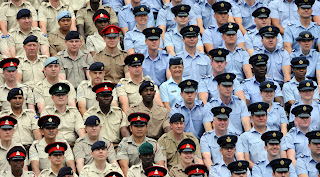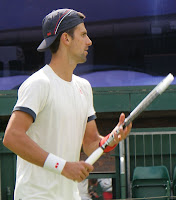 |
| Groundstaff scour the courts, in readiness for pregerminated grass seed |
Even before Andy Murray's Centre Court tears have dried, the All England Club is being transformed from its traditional Wimbledon championships guise into a London 2012 Olympics venue.
The London 2012 Organising Committee (LOCOG) took control of the world's most famous tennis courts today, just 18 days before players begin battling for gold medals.
Aided by the use of pregerminated seeds, modern grow covers and
hopefully lots of cooperation from Mother Nature, the lawns of Wimbledon
— in all their iconic, green glory — will be ready to impress the world
when Olympic tennis begins July 28...hopefully.
 |
| The iconic purple and green of Wimbledon is being replaced with the pink of the Olympics |
And while the courts may (or may not) be returned to their green and lush glory, the same cannot be said for the rest of SW19...
Already, the dark green canvas backstops on the outside courts have been replaced with the purple (looks more like pink to me) brand of London 2012, complete with Olympic rings, while the club's ground staff are busy restoring the lawns after their two-week battering during the rain-hit championships which ended on Sunday.
We, however, wont be there for the Olympics. But we may be back to report on the 2013 Wimbledon Championships...keep an eye open for us on twitter at @Wimble2012 - though a name change may be needed next year, of course.
Oh and thank you to the thousands of you who either followed this blog regularly or simply stopped by to take a look. We hope you liked what you found here. And a big thank you to my co-blogger; for those of you that may have thought this year's blog was a little on the dull side without gypsum's photographic input, all I can say is that it would have been a whole lot duller without Dr Joe.






















































